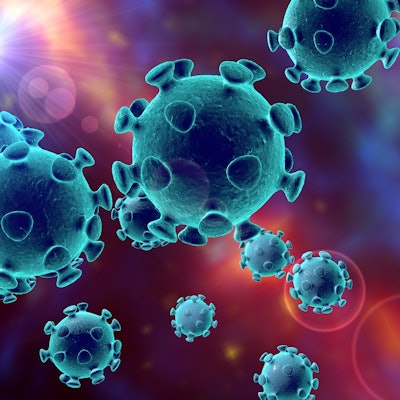
Public health dentists and dental assistants in Italy who treated patients while the COVID-19 pandemic ran rampant did not appear to develop the disease, according to an article published on September 3 in Oral Diseases.
The occupational risk of dentists and dental assistants for COVID-19 was estimated to be zero when they adhered to basic infection control standards, according to the authors.
"Relatively simple infection control procedures were enough to control occupational COVID-19 risk during the outbreak," wrote the group, led by Stefano Petti, PhD, of the department of public health and infectious diseases at Sapienza University in Rome.
So many unknowns
A lack of clear guidance from elected and health officials, unanswered questions about the virus, issues with testing, and the lack of a vaccine have left many confused and longing for some normalcy. Though dentistry has rebounded from the pandemic better than other industries, many practices continue to face challenges, such as personal protective equipment shortages, revenue losses, and employee safety concerns. The results of this study may finally put dentistry at ease.
An opportunity
When the pandemic peaked in Italy, non-COVID-19 healthcare facilities had to scale back to ensure that those working with infected patients had adequate resources. This allowed clinicians who worked at a nonhospital dental unit in Italy to investigate the occupational COVID-19 risk to dental staff.
The dental team at the Territorial Health and Social Services Authority consists of 11 dentists, three dental assistants, and 13 nurses. The group implemented infection control protocols based on guidance from the U.S. Centers for Disease Control and Prevention, the World Health Organization, and the ADA at the public health center, which provides medical and dental care to residents in the southeastern area of Milan.
The researchers used the measures, such as wearing masks and having patients gargle with a preprocedural rinse, to determine the occupational risk of contracting symptomatic COVID-19 in a dental setting, as well as the probability of treating asymptomatic, potentially contagious patients during the study period of February 20 through April 30. The projections are based on the estimated numbers of asymptomatic patients, confirmed cases, and fatalities in Lombardy, Italy, which was a pandemic hotspot.
Pretty safe
During the study period, there were 256 dental encounters; 75% involved treatments that generated aerosols. Dentists and assistants treated an estimated six asymptomatic patients during the 50 days (95% confidence interval [CI], 3-13).
Furthermore, the probability of developing COVID-19 per worked hour per person was 0% with a confidence interval of up to 3.2%, they wrote.
Though none of the employees who worked exclusively in the center's dental department contracted symptomatic COVID-19, a nurse who worked in both the dental and medical departments did get it. The origin of the nurse's infection couldn't be confirmed. Therefore, the probability of developing COVID-19 for nurses was 0.9% (95% CI, 0.1%-4.7%), according to the authors.
Some limits
One limitation of the study is that the occupational risk to dental staff was estimated and not directly assessed. Because the majority of SARS-CoV-2-infected individuals are asymptomatic, it is possible that dental team members acquired the novel coronavirus but experienced no symptoms, the authors noted.
Despite limitations, the study suggests that "infection control measures were effective enough to minimize the risk for infection to the dental staff even in high-risk conditions," they wrote.



















